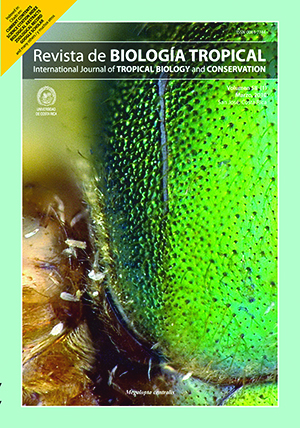Abstract
The Media Luna lake-spring was selected as representative of all thermal or no thermal springs in the zone of Valley of Rioverde, a semi-arid vegetation in the North-eastern of Mexico. This system is inhabited by 11 fish species, of which six are native. Four of the native species are endemic to the region and threatened due to touristic pressure and to the introduction of exotic species. The objectives were to determine the characteristics that influence the spatial distribution of the fish species, to analyze their spatial distribution patterns, and to describe the relationships between the different species. The general aim was to establish some basis for the conservation of these fish communities and their habitat. Several sessions were initiated in 1992 through direct observation. Later, between 1998 and 1999 five systematically seasonal sampling sessions were conducted (54 subaquatic transects/session). Finally, the data was updated by sampling in summer 2002 and winter 2006. Through the analysis was performed only for endemics of the region, like Ataeniobius toweri Meek, Cualac tessellatus Miller, Cichlasoma bartoni Bean and C. labridens Pellegrin, in at least one life stage, showed correlation with habitat variables or with other species. For these species, patterns of spatial aggregation and association with other species were observed. These results show a certain degree of specialization of endemic species to some microhabitat characteristics, as well as a significant interaction with other native species which they coexist. In addition, some significant relations between endemic and alien species suggest an antagonist relation. Management actions focused in the touristic use of the spring represent the main threat for these species, followed by an adequate management of exotic species. This study provides basis for future responsible management of these wetlands, where tourism and conservation can be combined.##plugins.facebook.comentarios##

This work is licensed under a Creative Commons Attribution 4.0 International License.
Copyright (c) 2010 Revista de Biología Tropical
Downloads
Download data is not yet available.






